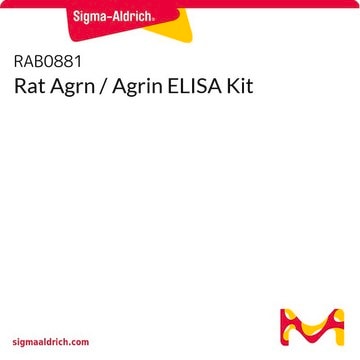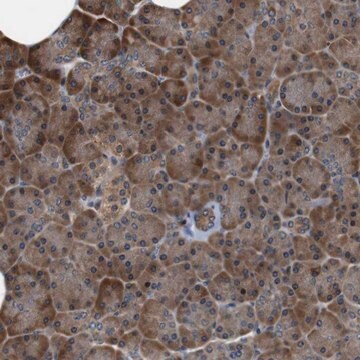SAE0095
Agrin Human
Recombinant, cell culture tested, expressed in HEK 293 cells
Synonyme(s) :
AGRN, Proteoglycan
About This Item
Produits recommandés
Produit recombinant
expressed in HEK 293 cells
Pureté
≥95% (SDS-PAGE)
Forme
lyophilized powder
Puissance
attachment assay, measured by the ability of the immobilized agrin to support the adhesion of PC12 cells
Technique(s)
cell culture | mammalian: suitable
Adéquation
endotoxin tested
Conditions d'expédition
ambient
Température de stockage
−20°C
Description générale
Actions biochimiques/physiologiques
Agrin triggers the aggregation of acetylcholine receptors via the muscle-specific kinase (MuSK) and the low-density lipoprotein receptor-related protein 4 (Lrp4) receptor complex.
Agrin is required for the full regenerative capacity of neonatal mouse hearts.
Recombinant agrin has been shown in vitro to promote cardiomyocyte proliferation, as studied in mouse-induced and human-induced pluripotent stem cells. Recombinant agrin has been shown in vivo to promote cardiac regeneration, after induction of myocardial infarction in adult mice.
Code de la classe de stockage
11 - Combustible Solids
Classe de danger pour l'eau (WGK)
WGK 2
Certificats d'analyse (COA)
Recherchez un Certificats d'analyse (COA) en saisissant le numéro de lot du produit. Les numéros de lot figurent sur l'étiquette du produit après les mots "Lot" ou "Batch".
Déjà en possession de ce produit ?
Retrouvez la documentation relative aux produits que vous avez récemment achetés dans la Bibliothèque de documents.
Notre équipe de scientifiques dispose d'une expérience dans tous les secteurs de la recherche, notamment en sciences de la vie, science des matériaux, synthèse chimique, chromatographie, analyse et dans de nombreux autres domaines..
Contacter notre Service technique








